Recent Articles
Popular Makes
Body Types
2016 Volkswagen Passat First Drive and Review
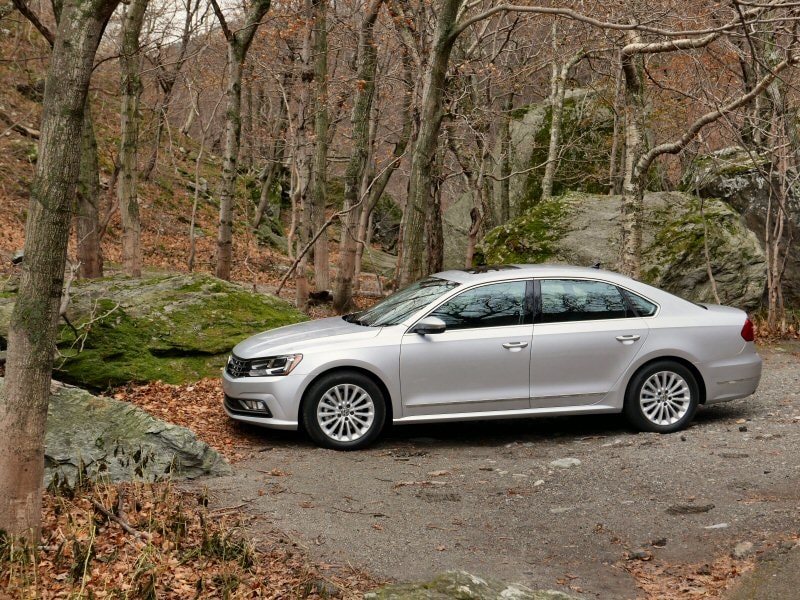
2016 Volkswagen Passat side profile ・ Photo by Benjamin Hunting
The 2016 Volkswagen Passat is the first vehicle launched by the automaker since the news broke that VW had engaged in a seven-year strategy to deliberately dupe emissions standards around the world with its TDI turbodiesel drivetrains. As a result, things were somewhat subdued in Stowe, Vermont, where I was invited to drive the new car: it was a low-key day in the surrounding hillside framed by refreshingly straight-talk from Volkswagen PR regarding the scandal and the steps being undertaken to resolve the deception in the minds of both customers and federal regulators. Unfortunately for the Passat, the absence of the TDI trim has largely robbed the mid-size sedan of its identity. Now forced to compete on merits other than frugality and the torque-happy nature of its turbodiesel option, the Volkswagen Passat lacks the cachet necessary to set itself apart from the ferociously-competitive family car pack. While still a 'good' car, the sedan finds itself facing off against some of the most popular automobiles on the market with its single most compelling feature on the bench (and facing an uncertain future).
Subtle Tweaks Update Familiar Styling
The 2016 Volkswagen Passat continues the sedan's trend of presenting a conservative take on what family transportation should look like. The revised Passat comes off as somewhat bulkier than the model it replaces, but in a manner that suggests a few extra trips to the gym rather than additional helpings of strudel. This is most evident up front, where VW designers have pumped up the power dome on the hood as well as enhanced the angularity of the car's fenders and bumpers. It's a broader face for the Passat, but it's one that's sharpened somewhat by the availability of LED headlights. LED tail lights can also be had with the sedan, where they join a new trunk lid and a similarly buffed-up rear bumper cover.

Photo by Benjamin Hunting
Still Big, Still Comfortable
One of the best aspects of the 2016 Volkswagen Passat hasn't been altered at all, and that's the copious amounts of rear seat room afforded its passengers. With just over 39 inches of space to stretch out your legs behind the front row the Passat is notable for its generous cabin, and unlike the more fashion-forward Volkswagen CC the larger car doesn't lop off your head with a plunging roofline. Genuine leather seating is available on higher Passat trim levels, as are a moonroof and even seat heaters front and rear, a boon for anyone forced to struggle through a winter climate year-in, year-out. Helping to enhance your calm inside the mid-size Volkswagen is a suspension system that's been tuned with comfort in mind. Never mind that it might lack the reflexes or even the instincts of a sport sedan; the Passat is at its best when cruising calmly down the highway. Vermont's twisting two-lane blacktop put the chassis to the test as I avoided both the narrow, jutting rocks of Smuggler's Notch as well as the occasional on-road cow-pie, and I am happy to report that the car asks you to endure a minimum of jostling at speed.
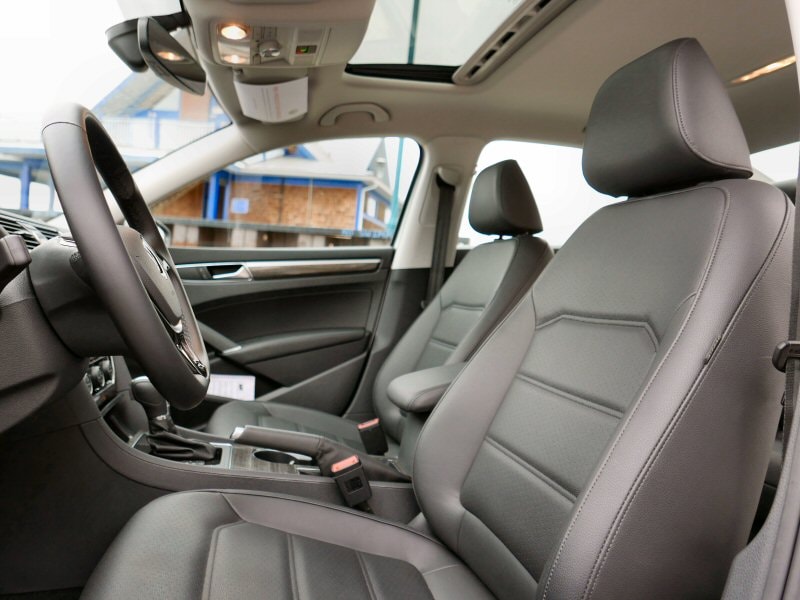
Photo by Benjamin Hunting
Improved Materials Brighten Cabin
The 2016 Volkswagen Passat's revised exterior is matched by a few tweaks made to the look and feel of its passenger compartment. It's subtle, but the changes are there: Volkswagen's designers have simplified the appearance of the car's dashboard, center stack, and gauge cluster, and while much of the standard brand uniform is present and accounted for - analog clock above the stereo system, big round tachometer and speedometer in front of the driver - it's all being worn just a little differently. I was most enamored of the use of wood grain trim on the door panels and as a frame on the dash, paired with an accent of rippled aluminum that added brightness to the cabin. One thing I would change? Deep-six the old-school, single-color LCD screen between the speedo and tach, which looks out of date in an era where TFT displays are becoming increasingly common.
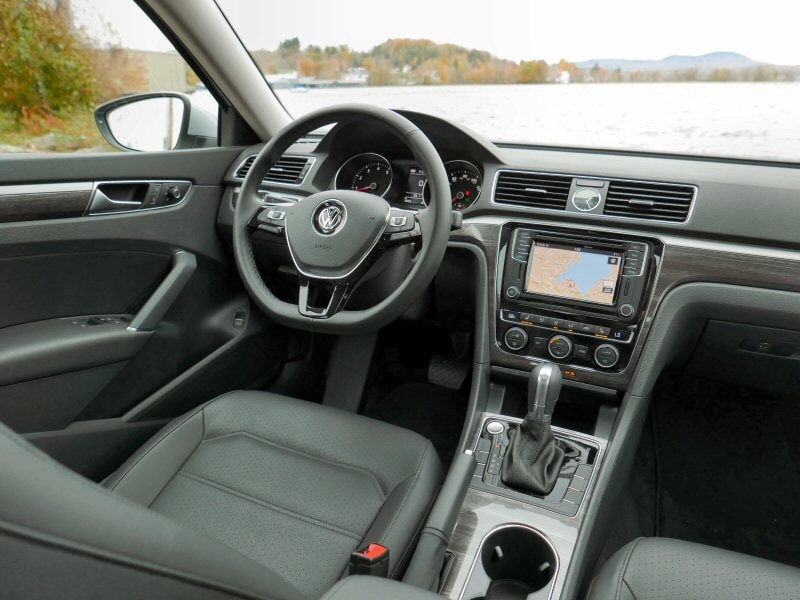
Photo by Benjamin Hunting
Long-Overdue Infotainment Update
Volkswagen never quite had a handle on the touchscreen interface concept until the recent introduction of the Golf hatchback introduced us to a new generation of in-car entertainment from the brand. The 2016 Volkswagen Passat also benefits from this vastly improved system, which controls audio, communications, and (optional) navigation features. It's much more responsive than the unit it replaces, and as an added bonus it doesn't take three to five minutes to load up when you first start the car, dramatically increasing your chances of being able to listen to the radio before you reach your destination. Volkswagen has thrown its fortunes in with the group of automakers supporting both the Apple CarPlay and Android Auto smart phone integration systems. In theory, these two interfaces are designed to offer the convenience of having your mobile device's screen projected onto the Passat's larger touchscreen. In practice, you get only a handful of apps and lock yourself out of the rest of the car's on-board functionality for the duration of the connection - not to mention render your phone useless at the same time. On the plus side, at least it means that Volkswagen has finally given in to the almost five-year-old trend of having USB ports installed in vehicles. You can't win them all.
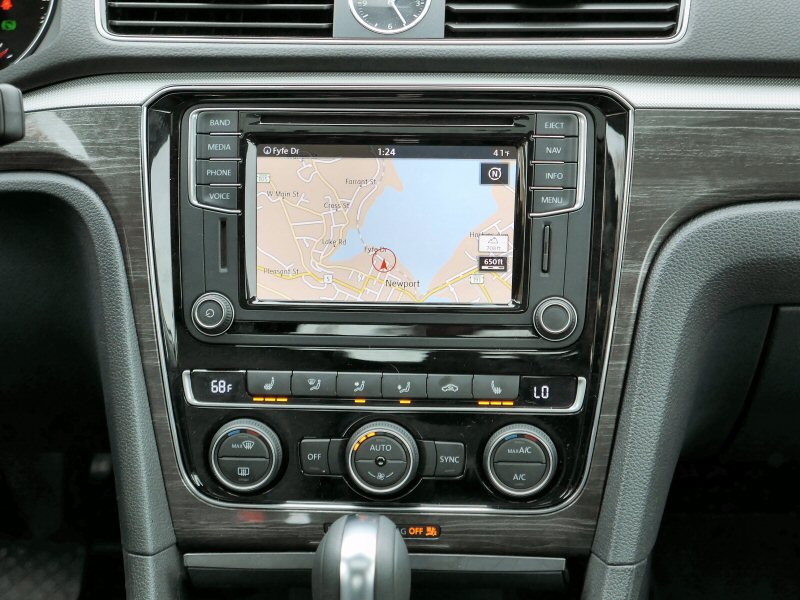
Photo by Benjamin Hunting
Big Move Towards Advanced Safety Gear
An even more important advancement in the 2016 Volkswagen Passat's high-tech arsenal can be found on its list of safety features. For the first time the Passat now offers a comprehensive suite of active safety equipment that includes a lane keeping assistant (that actively steers the car back between the lines should it wander out of its lane), a blind spot warning system that includes automatic braking intervention when reversing the Passat, and a forward collision warning system that can also slow the sedan down should a potential impact be detected. This very competitive array of protective technologies is joined by adaptive cruise control as well as automated parallel and perpendicular parking - the latter being a feature that I can't ever recall having to use, but which should appeal to novice pilots intimidated by the urban jungle.
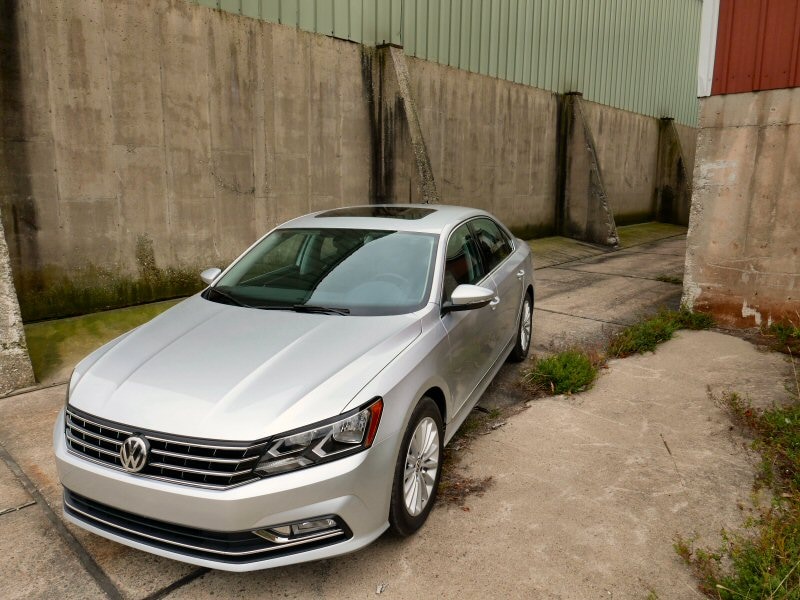
Photo by Benjamin Hunting
Underwhelming Turbo Four, Under-appreciated V6
The 2016 Volkswagen Passat comes standard with a 1.8-liter, turbocharged four-cylinder engine that produces 170 horsepower and 184 lb-ft of torque. Paired exclusively with a six-speed automatic transmission, this unit delivers fuel mileage of 25-mpg in stop and go driving, and 38-mpg during highway cruising. If you've shopped for a compact car recently, you might notice that these numbers would be competitive in the segment just below the one that the Passat finds itself in, but even given its modest 3,300 lbs of curb weight they come off as underwhelming from behind the wheel of the bigger sedan. Passing at highway speeds is protracted when pushing down on the turbo car's go-pedal, and while shifts are smooth there's no sense of urgency from the transmission as you silently urge it to find a few extra lb-ft to help you get by the truck in the lane beside you before you hit oncoming traffic.
There's an antidote to the Passat's turbo woes, but it comes at a price. The vehicle is also offered with a 280 horsepower, 3.6-liter V-6 that is matched with a six-speed dual-clutch automated manual transmission. Also capable of producing 258 lb-ft of torque, the six-cylinder Volkswagen is more authoritative in all situations where stout acceleration is required, but in addition to the efficiency penalty associated with the motor (20-mpg city / 28-mpg highway), there's also the extra cash you'll have to fork over for the higher trim levels that feature the optional engine.
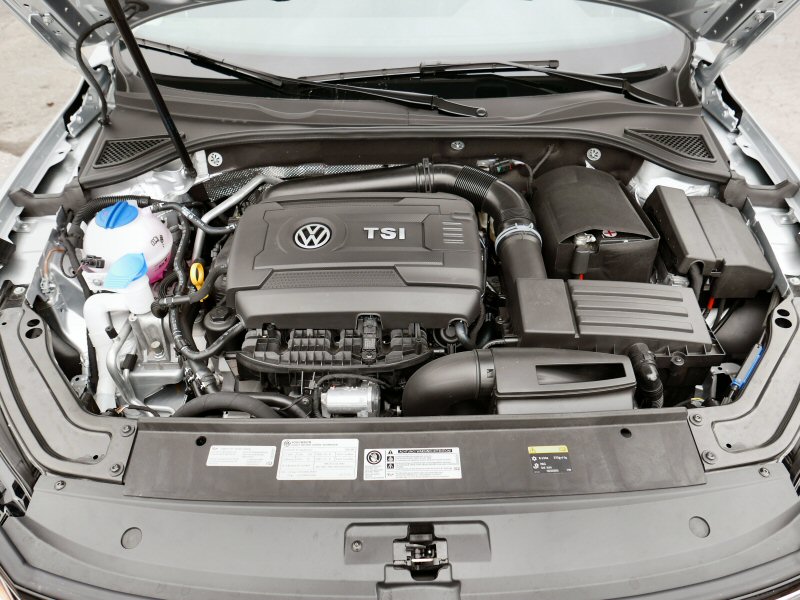
Photo by Benjamin Hunting
No TDI Turbodiesel Model - For Now
The missing link that used to connect these two Passat drivetrains is, of course, the 2.0-liter turbodiesel four-cylinder that has been struck from the order sheet until the company can figure out how to deliver the same combination of low-end torque and fuel-conscious efficiency without breaking all the rules. The 2016 Volkswagen Passat suffers greatly from the loss of its segment-exclusive engine, which represented close to 30 percent of total sales for the car. Absent the brawn and 'eco-friendly' image of the TDI model - a reputation that might now be perpetually tarnished by the brand's backroom shenanigans - the Passat is left with the very ordinary engine pair listed above, as so many development dollars having been poured into its diesel technology that there's little to brag about under the hood in the gas-only category.
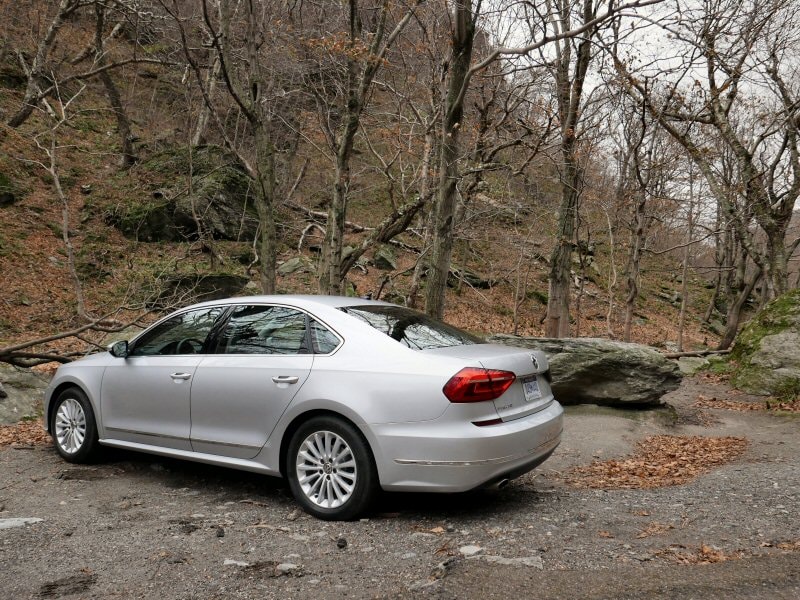
Photo by Benjamin Hunting
R-Line Offers Show, But No Extra Go
The 2016 Volkswagen Passat R-Line presents something of a missed opportunity for VW to plug the gap between its base model and the top-tier V6. Ostensibly the R-Line is meant to offer enthusiasts forced to segue into a mid-size family car the chance to express their automotive passion, at least visually: there's a slightly more aggressive set of bumpers front and rear, unique 19-inch rims, side skirts, a diffuser, and the usual array of sporty interior highlights. What you won't find are any actual improvements in the Passat's performance - no stiffer suspension settings, no re-tuned steering, and definitely no bump in power. I know that VW didn't plan for its TDI deception to be unmasked, which means its engineers never had time to ponder the band-aid effect of a legitimately exciting-to-drive Passat R-Line. My unsolicited suggestion for a 2016.5 model year update: give the R-Line the 2.0-liter turbo from the Volkswagen GTI paired with a six-speed dual-clutch gearbox. The 220 horses offered by the peppier four-cylinder is honestly what the base sedan should feature to begin with, and since it's got enough torque to match the V-6 you end up with a more interesting Passat that's negligibly heavier than the 1.8-liter model with very little cost to the company. Barring this early-cycle intervention, at least stuff the 2.0 into the entry-level car so that VW can offer a family four-door that's competitive across the board.
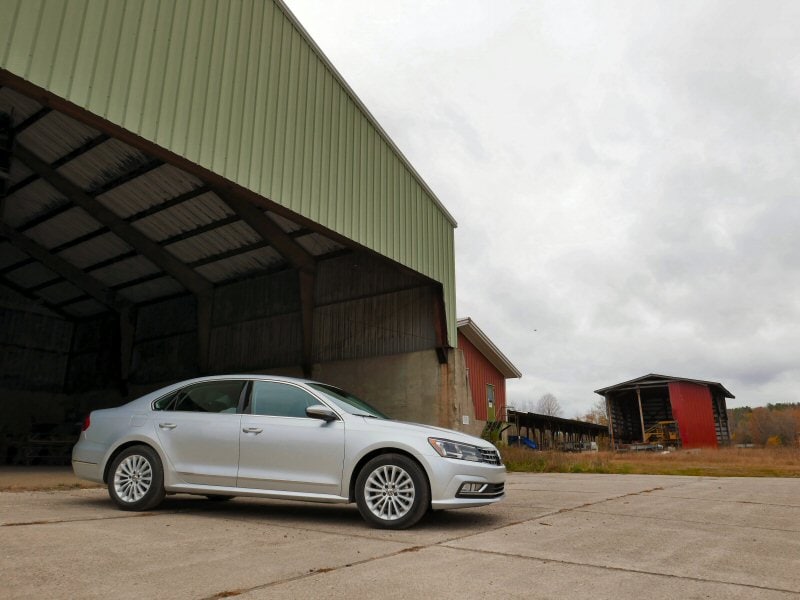
Photo by Benjamin Hunting
Pros / Cons
Pros: • Huge cabin • Comfortable ride • Affordable pricing • Great suite of advanced safety gear • Available V6 power Cons: • Missing TDI model leaves a huge hole in the Passat line-up • Entry-level engine feels adequate at best when passing • Android Auto and its ilk aren't ready for prime time • R-Line looks good, but where's the beef?
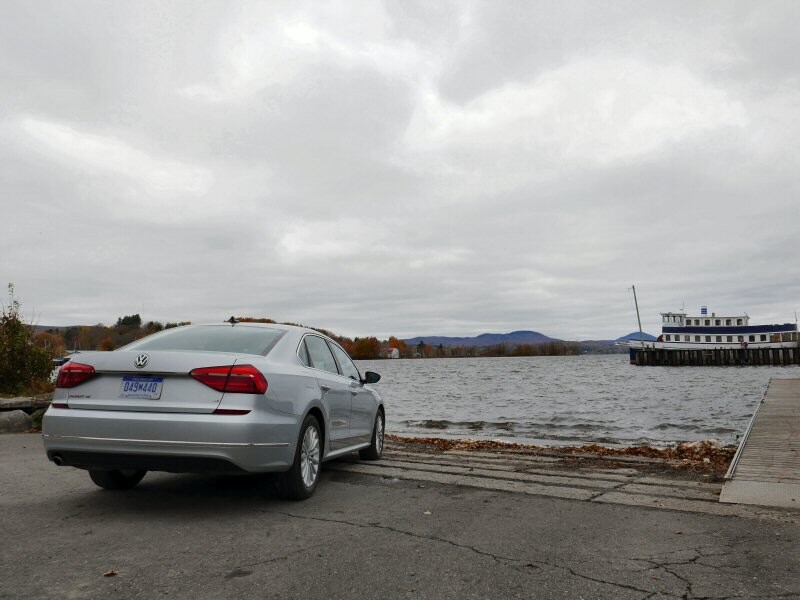
Photo by Benjamin Hunting